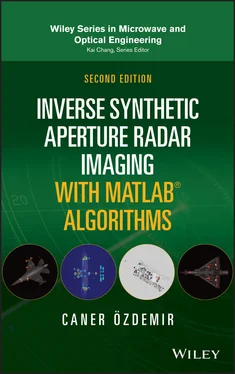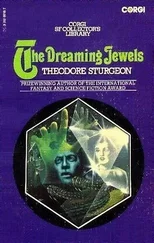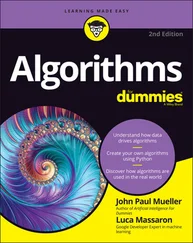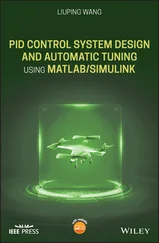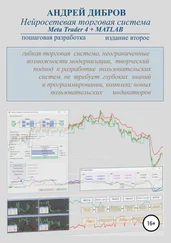Matlab code 2.6 Matlab file “Figure2 ‐ 18.m”
%--------------------------------------------------------- % This code can be used to generate Figure 2.18%--------------------------------------------------------- clear close all sigma=1e-10; % set sigma t=-25e-9:0.01e-9:25e-9; % choose time vector N=length(t); mex(2451:2551)=1/sqrt(2*pi)/sigma^3*(1-t(2451:2551). ^2/sigma^2)... .*(exp(-t(2451:2551).^2/2/sigma^2)); % form wavelet mex=mex/max(mex);mex(N)=0; % Frequency domain equivalent dt=t(2)-t(1); % time resolution df=1/(N*dt); % frequency resolution f=0:df:df*(N-1); % set frequency vector mexF=fft(mex)/N; % frequency domain signal %--- Figure 2.18(a)------------------------------------------------ plot(t(2251:2751)*1e9,mex(2251:2751),'k','LineWidth',2); grid minor set(gca,'FontName', 'Arial', 'FontSize',12,'FontWeight','Bold'); xlabel('\ittime, ns'); ylabel('\itamplitude, V'); axis([-2.5 2.5 -.5 1.1]); %--- Figure 2.18(a)------------------------------------------------ figure plot(f(1:750)/1e9,20*log10(abs(mexF (1:750))),'k','LineWidth',2); grid minor set(gca,'FontName', 'Arial', 'FontSize',12,'FontWeight','Bold'); axis([0 f(750)/1e9 -180 -40]); xlabel('\itfrequency, GHz'); ylabel('\itfAmplitude, dB');
Box Matlab code 2.7 Matlab file “Figure2 ‐ 19and20.m”
%--------------------------------------------------------- % This code can be used to generate Figure and Figure 2.19%--------------------------------------------------------- clear close all fo=1e6; % choose base frequency t=0:1e-9:4e-6; tt=0:1e-9:17e-6; % choose time vector k=1.0e12; % choose chirp rate sinep=sin(2*pi*fo*t);sinep(12001:16001)=sinep; % form CW pulse sinep(17001)=0; m=sin(2*pi*(fo+k*t/2).*t); % form LFM pulse m(12001:16001)=m; m(17001)=0; %--- Figure 2.19(a)------------------------------------------ plot(tt*1e6,sinep,'k','LineWidth',2); set(gca,'FontName', 'Arial', 'FontSize',14,'FontWeight','Bold'); xlabel('Time [\mus]'); ylabel('Amplitude [V]'); axis([0 17 -1.1 1.1]) %--- Figure 2.19(b)------------------------------------------ plot(tt*1e6,m,'k','LineWidth',2); set(gca,'FontName', 'Arial', 'FontSize',14,'FontWeight','Bold'); xlabel('Time [\mus]'); ylabel('Amplitude [V]'); axis([0 17 -1.1 1.1]) % Frequency domain equivalent df=1/170e-6; % frequency resolution f=0:df:df*170000; % set frequency vector sinep=sin(2*pi*fo*t);sinep(170001)=0; m=sin(2*pi*(fo+k*t/2).*t); m(170001)=0; fsinep=fft(sinep)/length(t); % spectrum of CW pulse fm=fft(m)/length(t);% spectrum of LFM pulse %--- Figure 2.20(a)------------------------------------------------ plot(f(1:2000)/1e6,20*log10(abs(fsinep(1:2000))),'k','LineWidth',2); grid minor set(gca,'FontName', 'Arial', 'FontSize',12,'FontWeight','Bold'); xlabel('\itfrequency, MHz'); ylabel('\itAmplitude, dB'); % text(8,-10,'Single tone pulse') axis([0 12 -40 -5]) %--- Figure 2.20(b)------------------------------------------------ figure plot(f(1:2000)/1e6,20*log10(abs(fm (1:2000))),'k','LineWidth',2); grid minor set(gca,'FontName', 'Arial', 'FontSize',12,'FontWeight','Bold'); xlabel('\itfrequency, MHz'); ylabel('\itamplitude, dB'); % text(8,-10,'Chirp pulse') axis([0 12 -40 -5])
1 Balanis, C.A. (1982). Antenna Theory, Analysis and Design. New York: Harper & Row Publishers.
2 Balanis, C.A. (1989). Advanced Engineering Electromagnetics. New York: Wiley.
3 Bhalla, R. and Ling, H. (1993). ISAR image formation using bistatic data computed from the shooting and bouncing ray technique. Journal of Electromagnetic Waves and Applications 7 (9): 1271–1287.
4 Bhalla, R. and Ling, H. (1995). A fast algorithm for signature prediction and image formation using the shooting and bouncing ray technique. IEEE Transactions on Antennas and Propagation 43 (7): 727–731.
5 Brummund, U. and Mesnier, B. (1999). A comparative study of planar Mie and Rayleigh scattering for supersonic flowfield diagnostics. 18th International Congress Instrumentation in Aerospace Simulation Facilities (ICIASF 99), Toulouse, France, IEEE Record (Cat. No.99CH37025), 42/1‐4210.
6 Chu, T.H., Lin, D.B., and Kiang, Y.W. (1991). Microwave diversity imaging of perfectly conducting objects in the near field region. IEEE Transactions on Microwave Theory and Techniques 39: 480–487.
7 Crispin, J.W. and Siegel, K.M. (1970). Methods for Radar Cross‐Section Analysis. New York: Academic.
8 Ekelman, E. and Thiele, G. (1980). A hybrid technique for combining the moment method treatment of wire antennas with the GTD for curved surfaces. IEEE Transactions on Antennas and Propagation 28 (6): 831–839.
9 Ergül, Ö. and Gürel, L. (2005). Improved testing of the magnetic‐field integral equation. IEEE Microwave and Wireless Components Letters 15 (10): 615–617.
10 IEEE Std 145‐1993 (1993). Antenna Standards Committee of the IEEE Antennas and Propagation Society, IEEE Standard Definitions of Terms. The IEEE, New York, 31. doi: 10.1109/IEEESTD.1993.119664.
11 Johnson, J.B. (1928). Thermal agitation of electricity in conductors. Physics Review 32: 97.
12 Kim, T.J. and Thiele, G. (1982). A hybrid diffraction technique – general theory and applications. IEEE Transactions on Antennas and Propagation 30 (5): 888–897.
13 Kırık, Ö. and Özdemir, C. (2019). An accurate and effective implementation of physical theory of diffraction to the shooting and bouncing ray method via PREDICS tool. Sigma Journal of Engineering and Natural Sciences 37 (4): 1153–1166.
14 Knott, E.F. (1993). Radar Cross Section, 2e. Boston, MA: Artech House.
15 Knott, E.F., Shaeffer, J.F., and Tuley, M.T. (2004). Radar Cross Section, 2e. SciTech Publishing.
16 Ling, H., Chou, R.C., and Lee, S.W. (1989). Shooting and bouncing rays: calculating RCS of an arbitrary cavity. IEEE Transactions on Antennas and Propagation 37 (2): 194–205.
17 Mahafza, B.R. (2005). Radar Systems Analysis and Design Using MATLAB, 2e. Boca Raton, FL: Chapman & Hall/CRC.
18 Özdemir, C., Yılmaz, B., and Kırık, Ö. (2014). pRediCS: a new GO‐PO based ray launching simulator for the calculation of electromagnetic scattering and RCS from electrically large and complex structures. Turkish Journal of Electrical Engineering & Computer Sciences 22: 1255–1269.
19 Ruck, G.T., Barrick, D.W.S., and Krichbaum, C. (1970). Radar Cross Section Handbook, vol. 1. New York: Plenum Press.
20 Skolnik, M.I. (1990). Radar Handbook, 2e. New York: McGraw Hill.
21 Stover, J.C. (1995). Optical Scattering: Measurement and Analysis, 2e. Bellingham, WA: SPIE Press.
22 Sullivan, R.J. (2000). Microwave Radar Imaging and Advanced Concepts. Norwood, MA: Artech House.
23 Warnick, K.F. and Chew, W.C. (1999). Convergence of moment‐method solutions of the electric field integral equation for a 2‐D open cavity. Microwave Optical Technology Letters 23 (4): 212–218.
24 Weinmann, F. (2006). Ray tracing with PO/PTD for RCS modeling of large complex objects. IEEE Transactions on Antennas and Propagation 54 (6): 1797–1806.
25 Zhong‐Cai, Y., Jia‐Ming, S., and Jia‐Chun, W. (2006). Valeidity of effective‐medium theory in Mie scattering calculation of hollow dielectric sphere. 7th International Symposium on Antennas Propagation & EM Theory (ISAPE '06), Guilin, China (ISAPE ’06), pp. 1–4.
Конец ознакомительного фрагмента.
Текст предоставлен ООО «ЛитРес».
Прочитайте эту книгу целиком, купив полную легальную версию на ЛитРес.
Безопасно оплатить книгу можно банковской картой Visa, MasterCard, Maestro, со счета мобильного телефона, с платежного терминала, в салоне МТС или Связной, через PayPal, WebMoney, Яндекс.Деньги, QIWI Кошелек, бонусными картами или другим удобным Вам способом.
